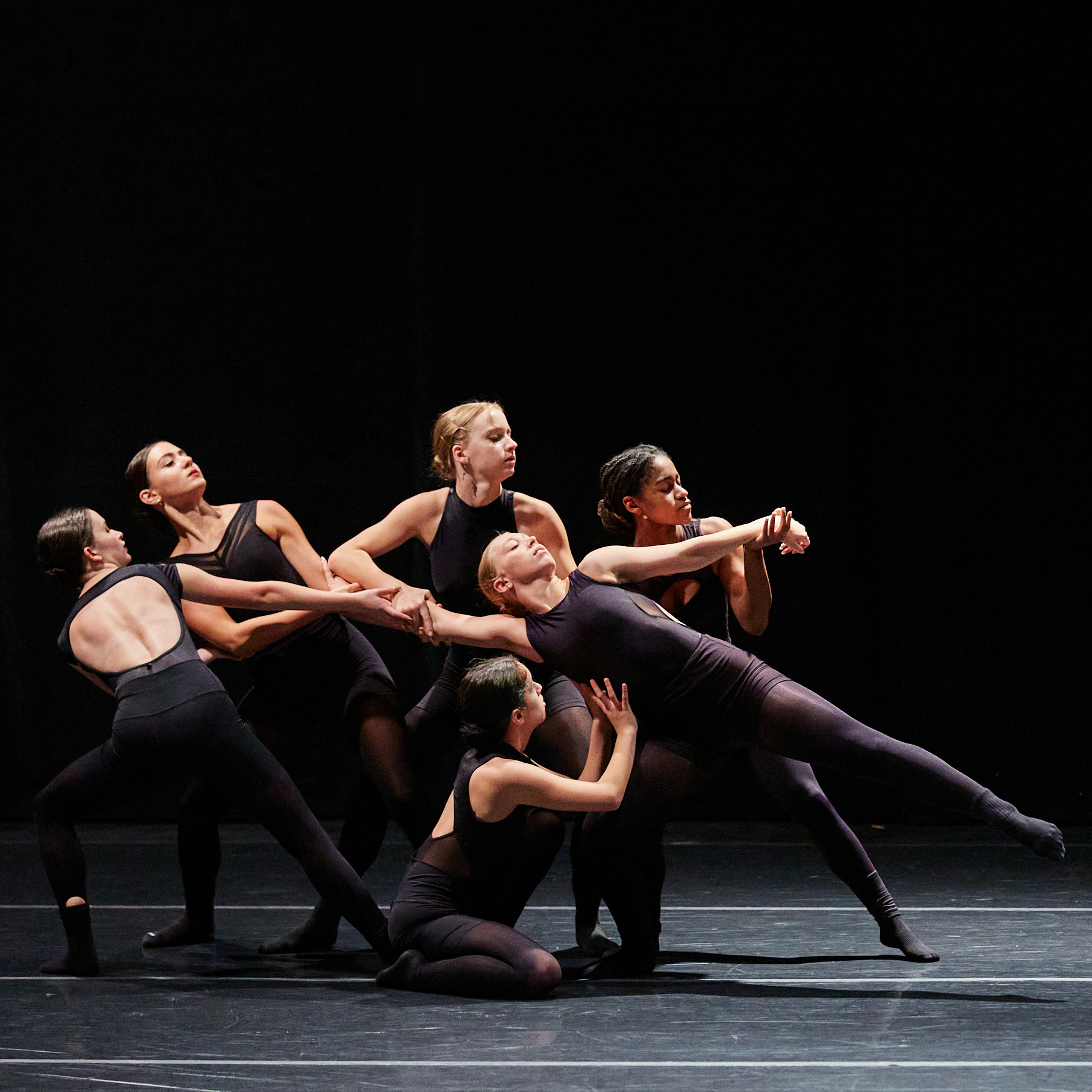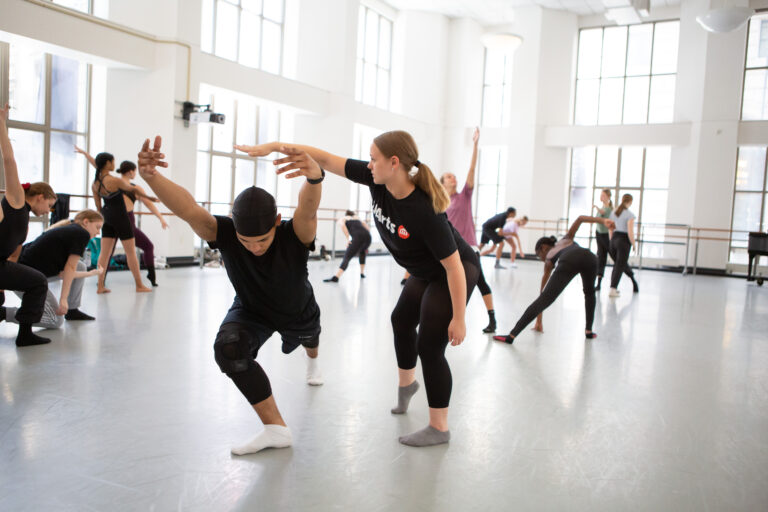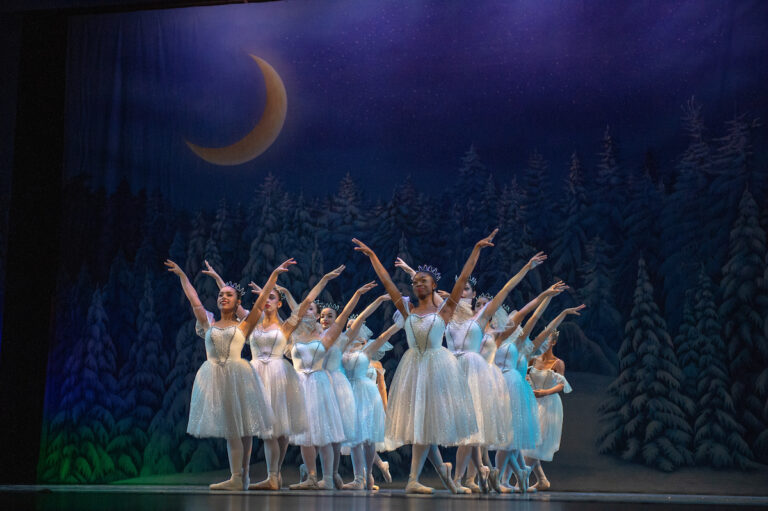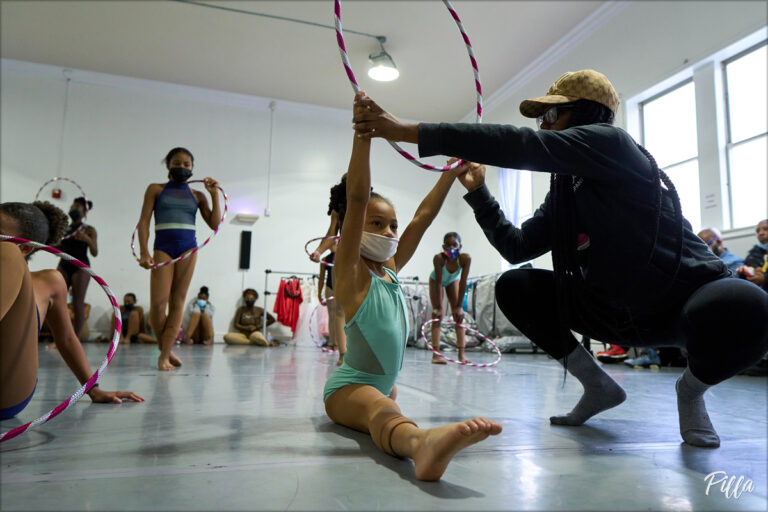
Dance teachers know that their students’ exposure to the choreographic process can often be limited. Factor in the hours spent furthering dancers’ technique, building their strength and polishing their performances, and it can be hard to provide students with dedicated time to learn about choreography as an art form.
Regional Dance America’s National Choreography Intensive carves a space for this purpose. The program, designed with specialized tracks for both dance and choreography students, fosters unique collaboration between the two groups.
Dance Teacher recently spoke with RDA’s leaders on our Instagram page. Watch the video below, and read on for highlights from the conversation.
Dancers: The Best of Both Worlds
NCI runs for two weeks at the end of June, often ending before longer summer intensives begin. This schedule is intentionally structured to allow applicants time to participate without detracting from other opportunities.
“As a dancer, you’ll experience daily master classes in a wide variety of dance genres in the morning, and then you’re assigned to work with new choreographers every day to learn new works,” says Erika Davis, CEO of RDA.
The morning class schedule, which is designed to emphasize career readiness, mirrors that of a professional dancer’s. In the afternoons, dancers collaborate with choreographers on assigned tasks. “One day it could be about spacing and another day it’s about musicality,” says Kylie Morton Berry, RDA’s Southeast president. “You’re always going to have this unique experience with who it is you’re working with and what other dancers are in the space with you.”
NCI also maximizes students’ performance experiences—dancers perform the works they learned that day every evening. The quick turnaround exposes students to a wide range of approaches, which “further leads to their ability to memorize, to retain and to produce material without a lot of rehearsal time,” Berry says.
Choreographers: Education in Collaboration
The choreography program runs parallel to the dance track but is divided into two subsections: Emerging (16 and above) and Project Tier (for more established artists). Both groups spend the morning in creative workshops for music and movement and then work with a group of dancers in the afternoon.
Emerging choreographers “receive new tasks and assignments to work on each day,” Davis explains. “In the afternoon, they work with a different group of dancers every single day.” The program is ideal for young artists, and maximizes the students’ freedom to take risks with their work. Students finish the course with two weeks of material to add to their resumé.
Different from the Emerging program, Project Tier participants work with the same group of dancers for the duration of the two-week course. The focused approach allows artists to create a more fully developed work, and the pieces are also performed at least once—often twice—during the intensive.
Both choreography programs are designed to teach artists how to work quickly and learn about their fellow artists efficiently. “Often as choreographers, we only get to work with…the company that we’re affiliated with,” Berry says. “This opportunity gives the choreographers a chance to work with brand-new dancers, brand-new minds, brand-new people and experiences.”
RDA Alumni: Real-Life Success
RDA alumni boast resumés that prove the organization’s success. Growing up, Laura Morton La Russa attended many RDA events before continuing her studies at Appalachian Ballet Company and Houston Ballet, and then dancing professionally with Atlanta Ballet, Terminus Modern Ballet Theatre and staibdance. She was named one of Dance Magazine’s “25 to Watch” in 2021 and has performed works by George Balanchine, Liam Scarlett and David Bintley.
“RDA has definitely been the catalyst for my career,” La Russa says, citing its festivals (which exposed her to a variety of teachers) and scholarship and recruitment opportunities. Perhaps most of all, she recalls how she was able to “learn from fellow dancers in a healthy and encouraging environment.”
Last summer, La Russa attended NCI for the first time as a Project Tier choreographer. “For two weeks, we got to be part of this creative hub together,” she says of the participants in both the dance and choreography tracks, noting the growing confidence she observed in the program’s young artists.
Teachers: An Experience That Gives Back
RDA views its intensive as a window into professional life, which can serve to inspire students at many points in their education. “This is great insight into what it’s like to work day to day in a company or even as a freelance artist for the craft,” Berry says.
For teachers everywhere, Berry says that the coursework at NCI will continue to benefit students when they return to their home studios. “Think of those dancers that you feel would really benefit from that experience of working with different individuals in a really supportive atmosphere,” she says, noting how they’ll return to their studios for the fall semester, bringing the confidence they’ve gained with them.
Application Details
The 62nd National Choreography Intensive runs June 19–July 1 in Dayton, Ohio.
Application requirements differ based on the track for which you’re applying, but Berry and Davis both encourage applicants to emphasize their individuality in their portfolio materials. “We love seeing dancers, who they are as individuals,” Berry says. For choreography applicants, they’re more interested in an applicant’s investment in the artistic process than the final product on display.
The online application portal is open now, and applications are reviewed on a rolling basis.



